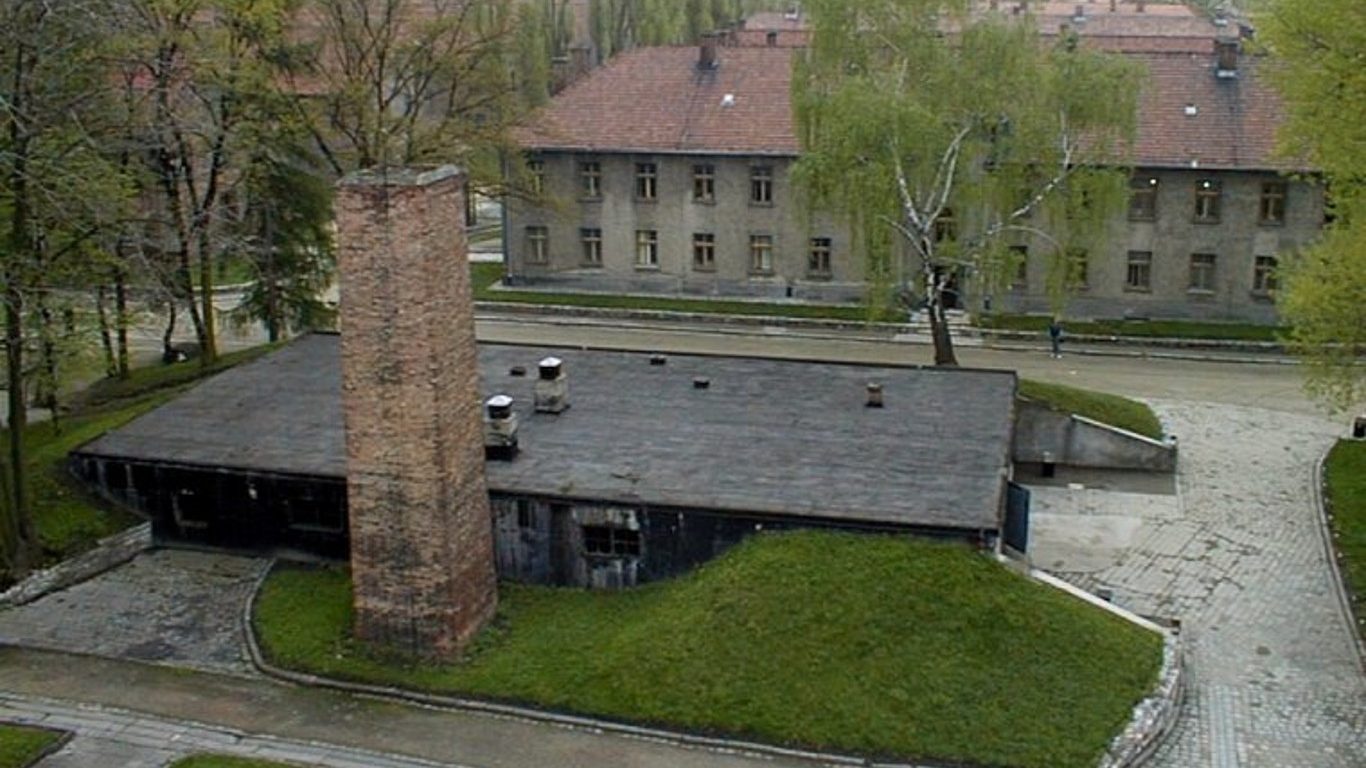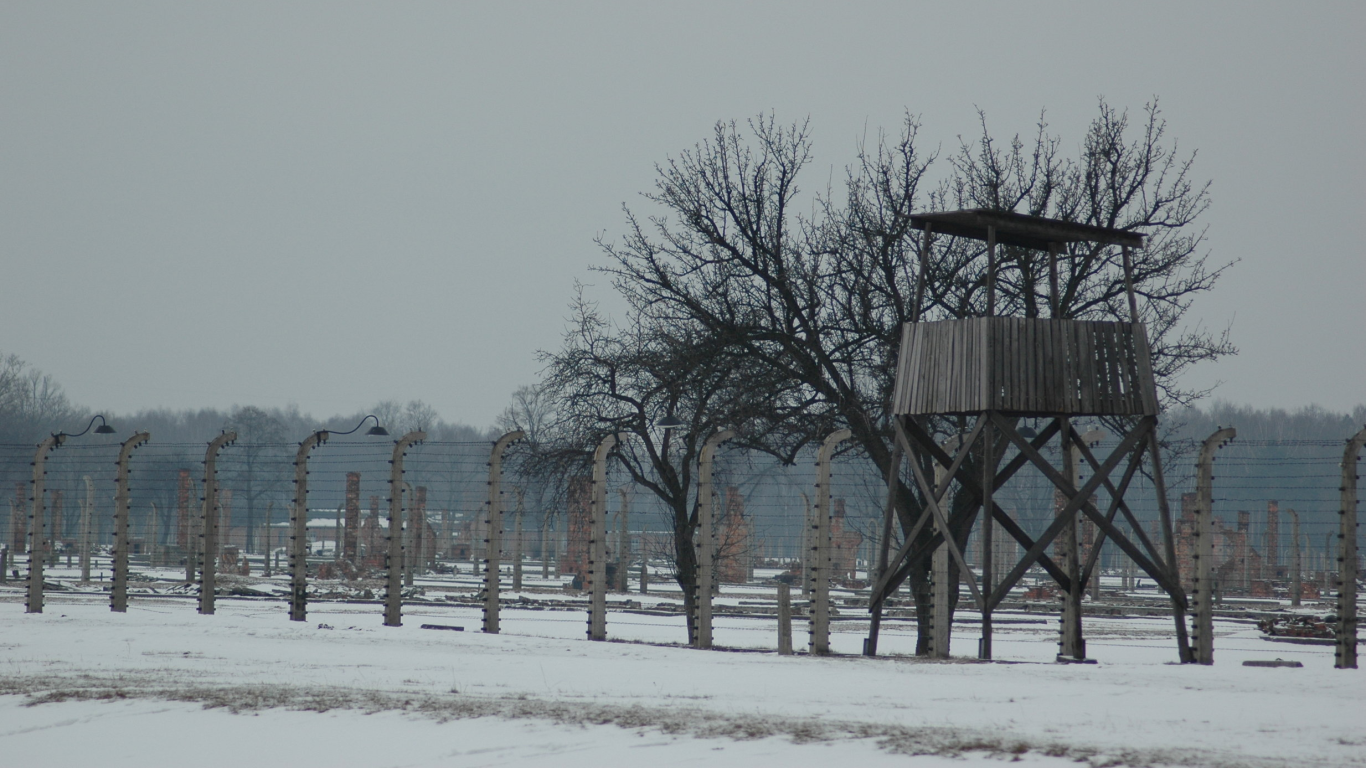On Jan. 20, 1942, SS General Reinhard Heydrich, the chief of Germany’s Security Police, organized a secret meeting at a villa in Wannsee, a suburb of Berlin, to decide on a ”permanent solution” to what they called the “Jewish problem.” Known as the Wannsee Conference, top civilian and police officials discussed how to execute their plan of the “Final Solution.” What emerged was the creation of a network of extermination camps intended to wipe out the 11 million Jews in Europe. Their goal was to eradicate 11 million Jews. They succeeded with six million.
Although there were 23 main concentration camps set up throughout Nazi-occupied territories, most of which were in Germany, and Poland, there were also additional, smaller incarceration sites, ghettos, labor camps, and killing centers. The largest complex of its kind was Auschwitz, in German-occupied Poland – which was not a single camp but a grouping of more than 40, dedicated to the imprisonment and often the murder of Jews and other “undesirables.” (These are symbols the Nazis used to mark their victims.)
Upon arrival, a majority of the prisoners were sent straight to the gas chambers, being told to leave their luggage behind once they disembarked from the trains and get undressed for disinfection in a shower. Instead of being gassed, some were literally worked to death. Auschwitz would become the largest of the Nazis’ six extermination centers and the deadliest, accounting for the deaths of a million people.
Auschwitz originally opened in 1940 as a prisoner-of-war camp. Birkenau, also known as Auschwitz II, and Auschwitz III were then later added, making it the largest extermination center, operating in this capacity until 1944. By the summer of 1944, however, the German war machine was collapsing on both the Eastern and Western fronts, and the Allies began liberating the camps. The first major one to be liberated – by the Red Army – was Majdanek, in Lublin, Poland, in July 1944. By then, the Nazis had evacuated most of that camp’s prisoners and sent them to concentration camps further west, including Auschwitz.
Prisoners at Auschwitz would not be liberated until Jan. 27, 1945 – again by the Soviets. They freed 6,000 survivors and discovered evidence of the mass murder that had taken place at the camp – as well as warehouses containing the personal belongings of hundreds of thousands of victims. (Unfortunately, anti-Semitism and other potentially deadly prejudices are still very much alive, even in our own country, demonstrated by these far-right hate symbols.)
24/7 Tempo has compiled a collection of photos of the death camp, where the “Endlösung der Judenfrage,” or final solution to the Jewish question, was realized so horrifyingly. These disturbing images depicting the horrors of Auschwitz illustrate the absolute cruelty of war and the toll hate takes. The road to recovery for the survivors of the Nazi horror would be long and difficult. Out of this catastrophe would emerge the nation of Israel, its very existence a defiant rejection of the Nazi attempt to eliminate the Jewish people.
Here are 20 Disturbing Images Depicting the Horrors of Auschwitz
1. Personal items
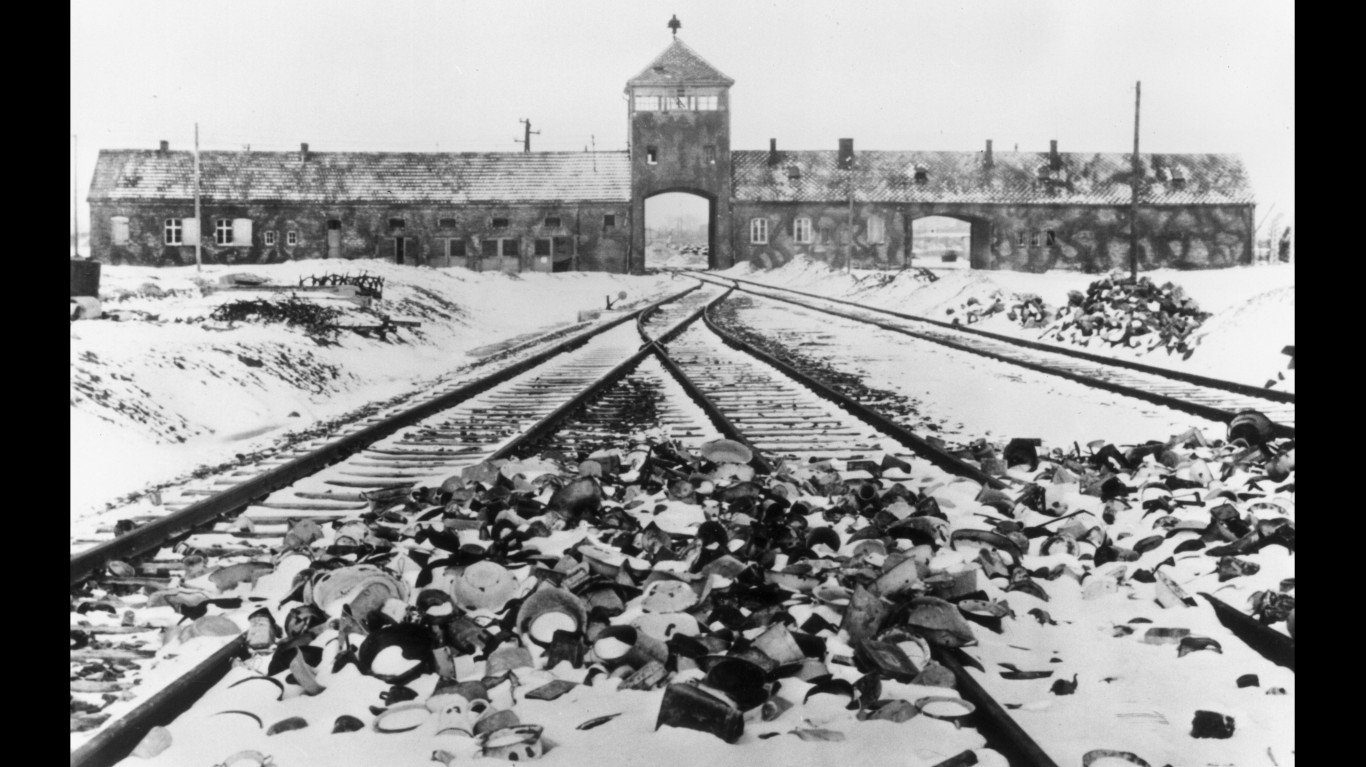
Personal belongings of Auschwitz prisoners are strewn along the train tracks in the snow outside the camp entrance.
2. Concentration camp
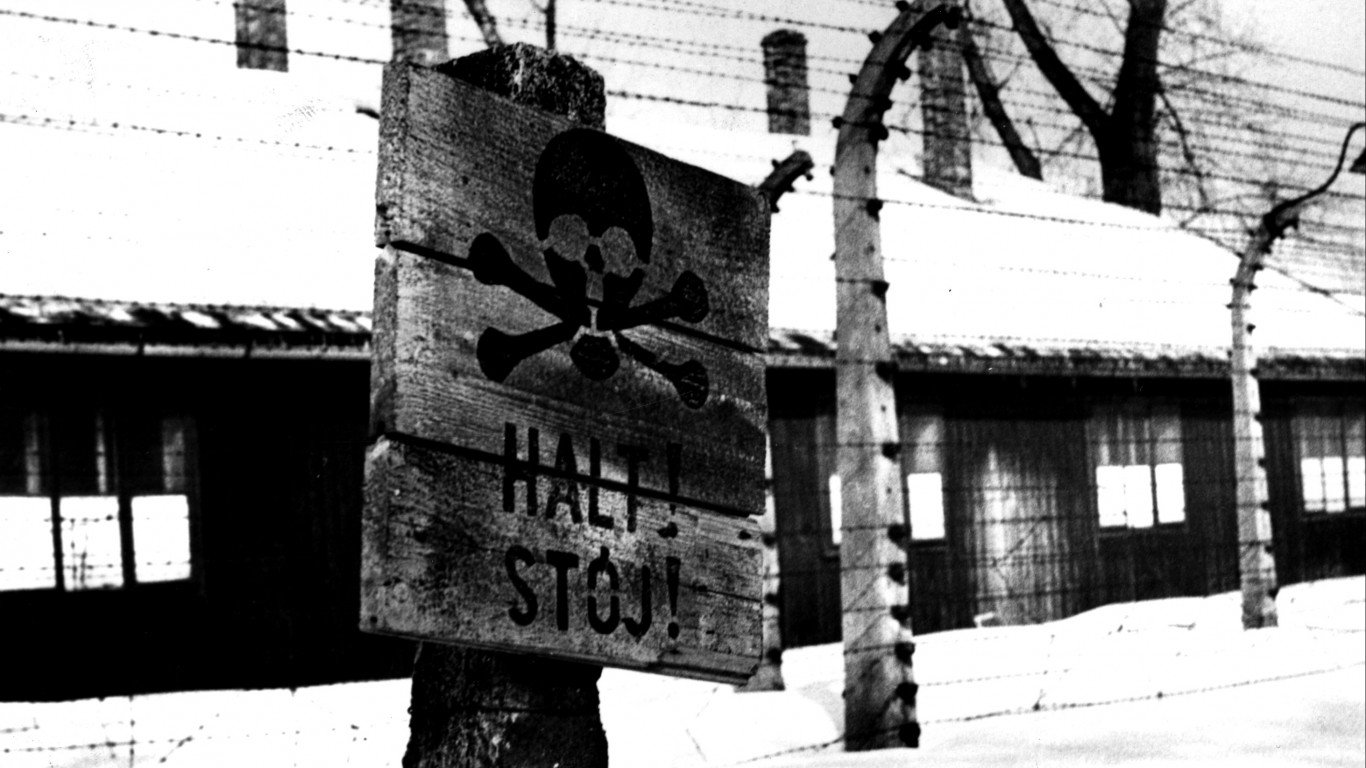
A sign warning people to stay away from the camp.
3. Fences
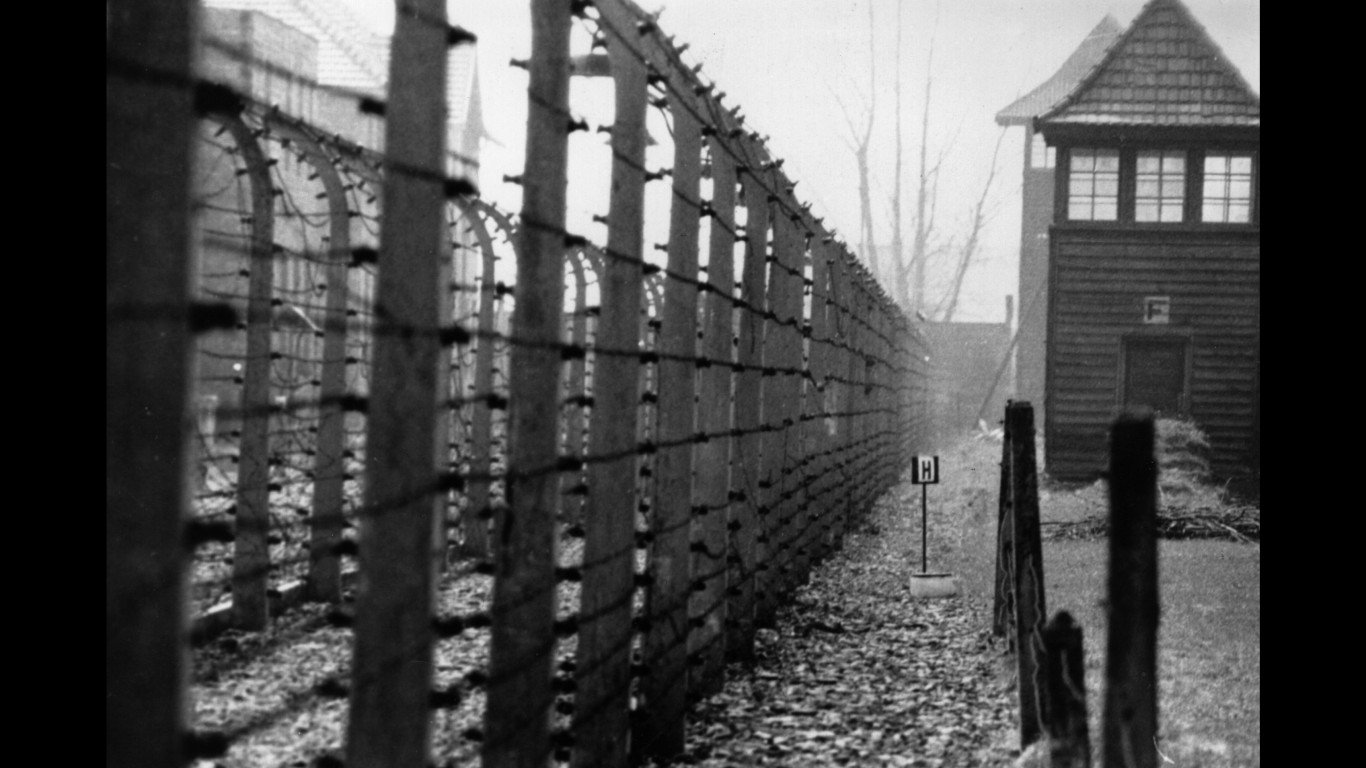
The perimeter fence of Auschwitz.
4. Death camp beds
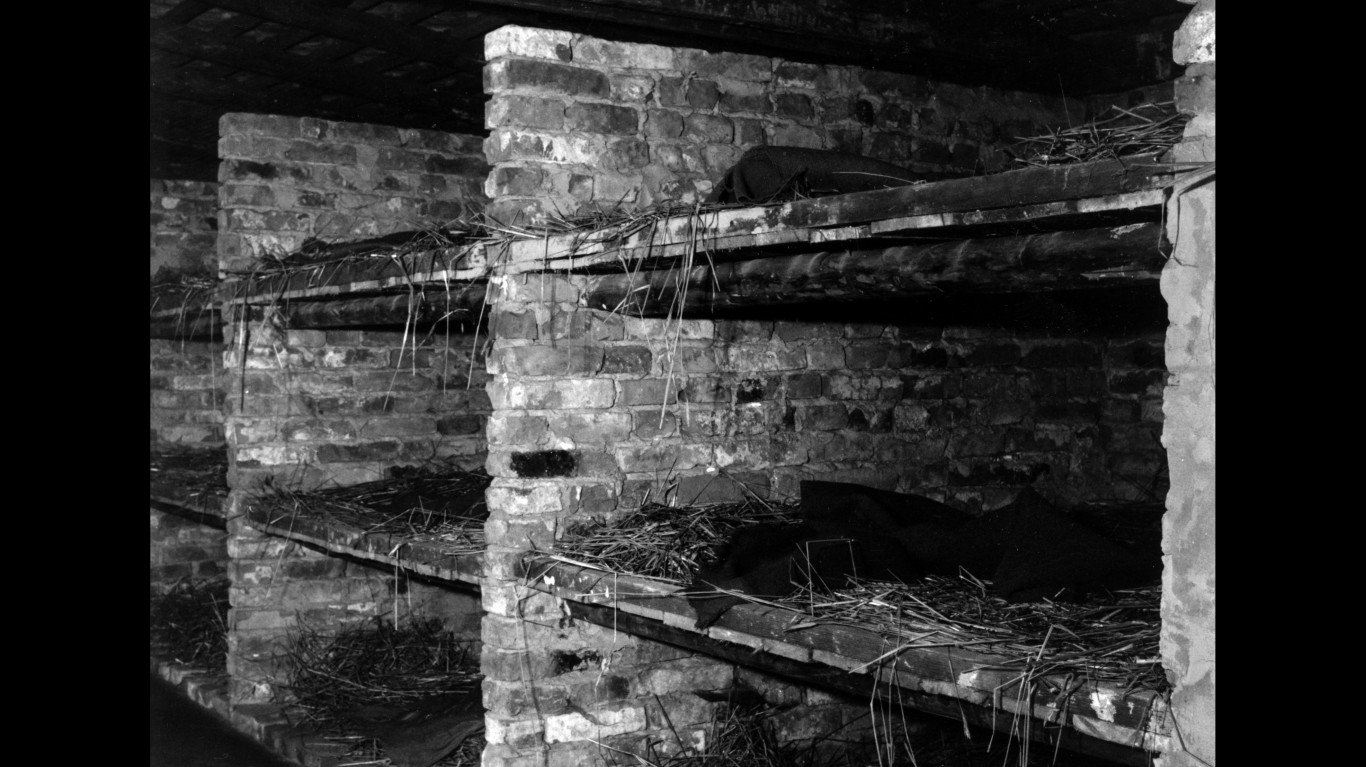
Sometimes four or five inmates were forced to sleep on a single bunk.
5. Deportees at Auschwitz

Jewish prisoners arrive at Auschwitz.
6. Auschwitz arrivals
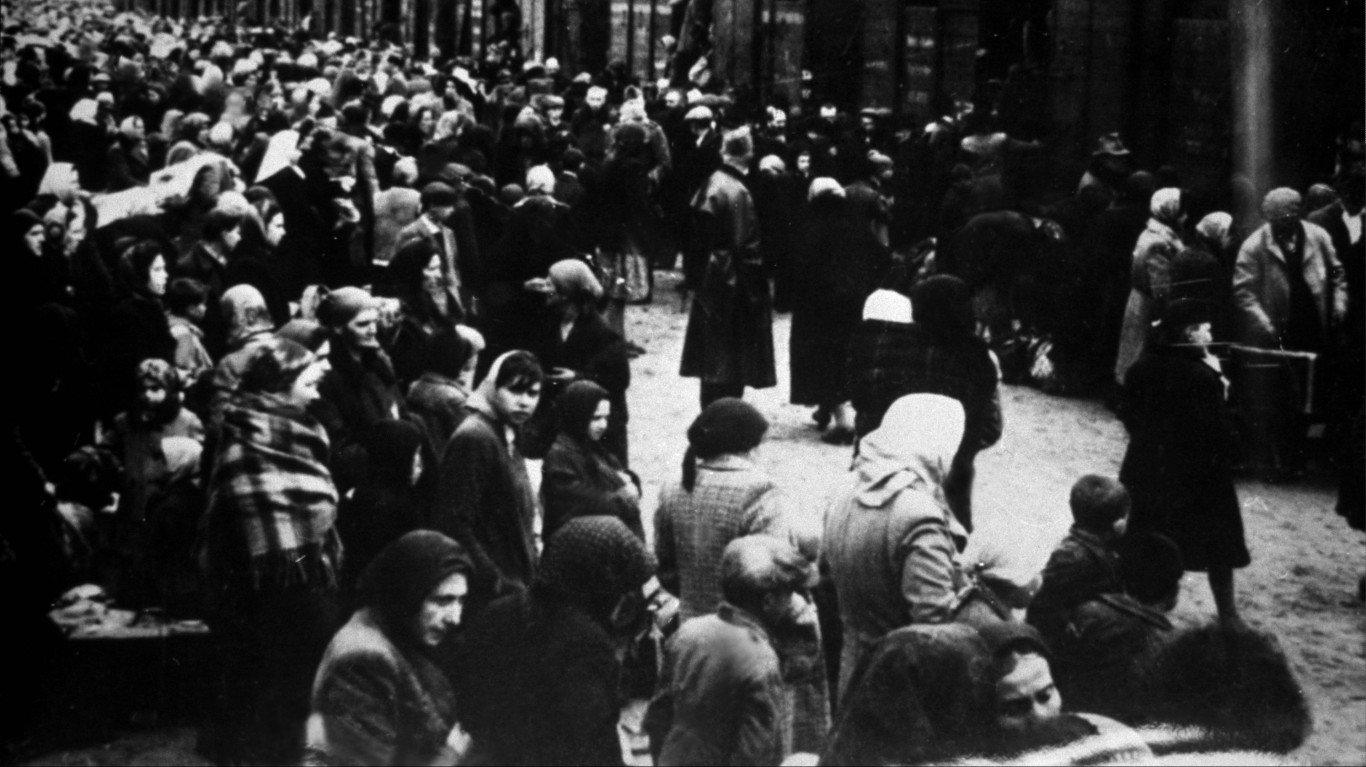
Deportees exit the trains that took them to Auschwitz.
7. Deportees
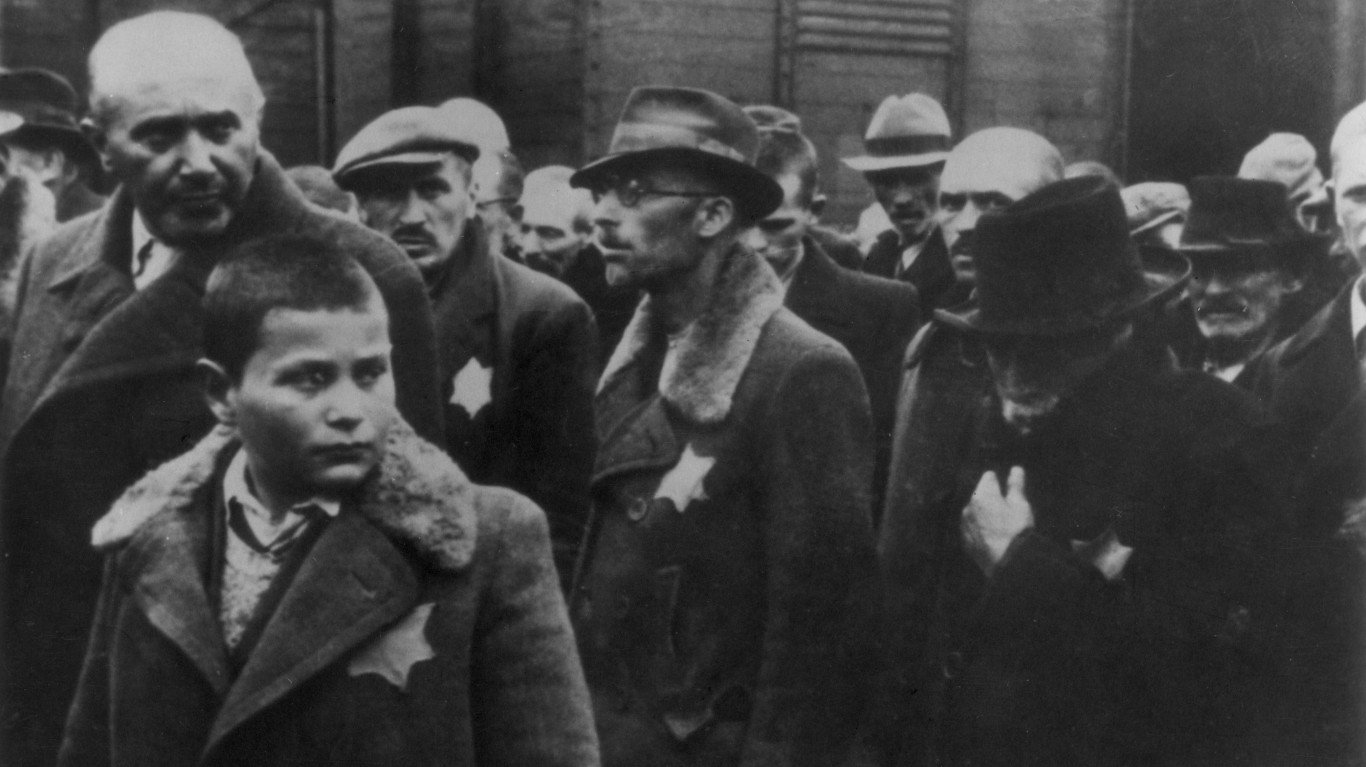
Deportees, with yellow stars sewn to their coats – a sign that they’re Jewish – arrive at Auschwitz.
8. Arriving at Auschwitz
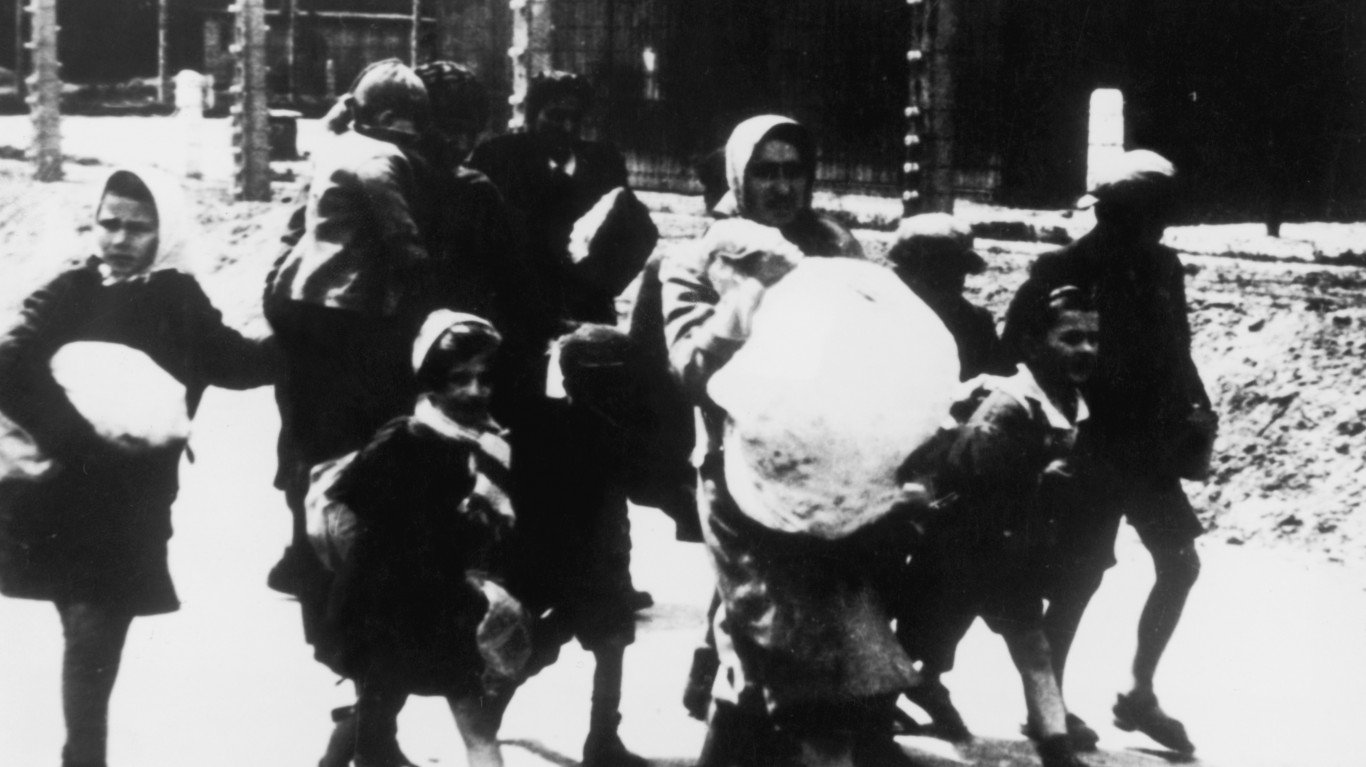
Women and children carry their belongings into Auschwitz.
9. Auschwitz sign
The words on the gate of Auschwitz: “Arbeit macht frei,” German for “Work sets you free.”
10. Auschwitz prisoners
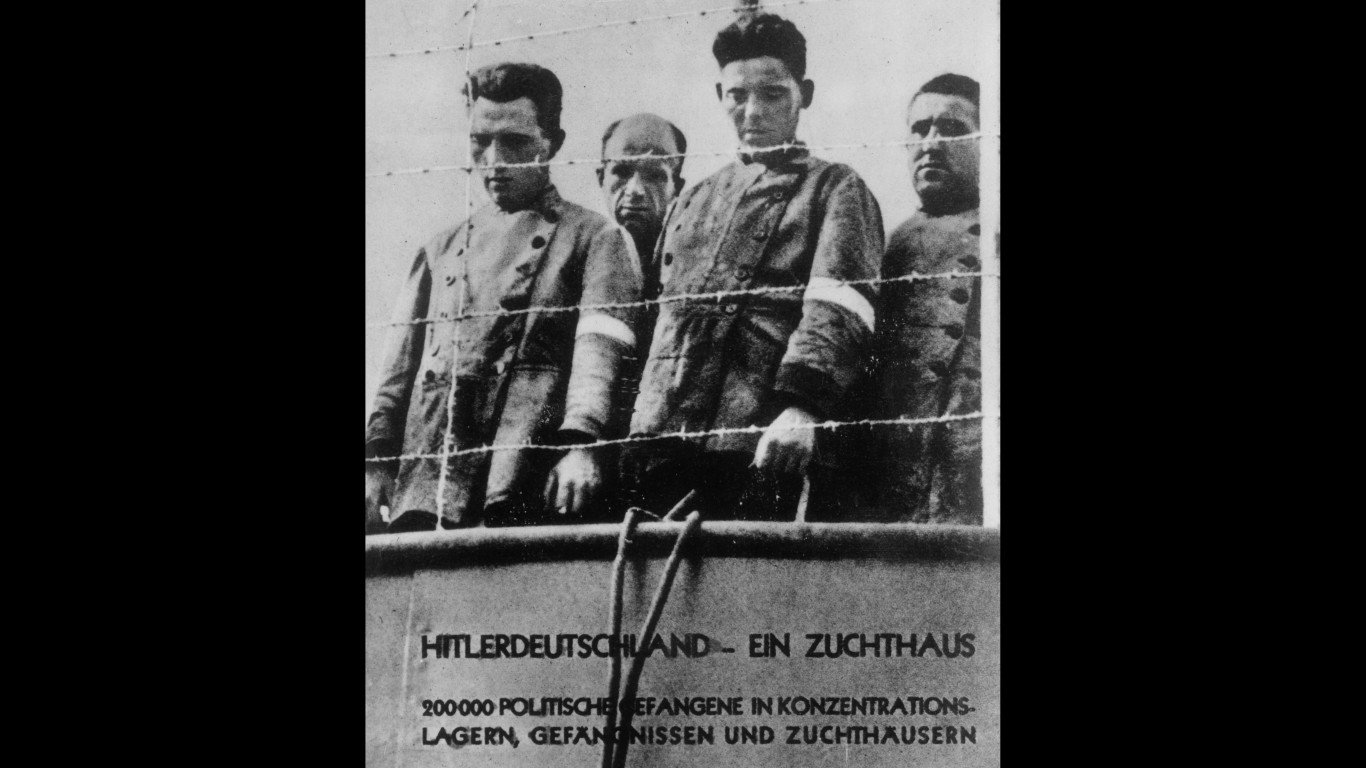
Behind barbed wire at the camp. The caption reads “Hitler’s Germany – a prison. 200,000 political prisoners in concentration camps, jails, and prisons.”
11. Child survivors of Auschwitz
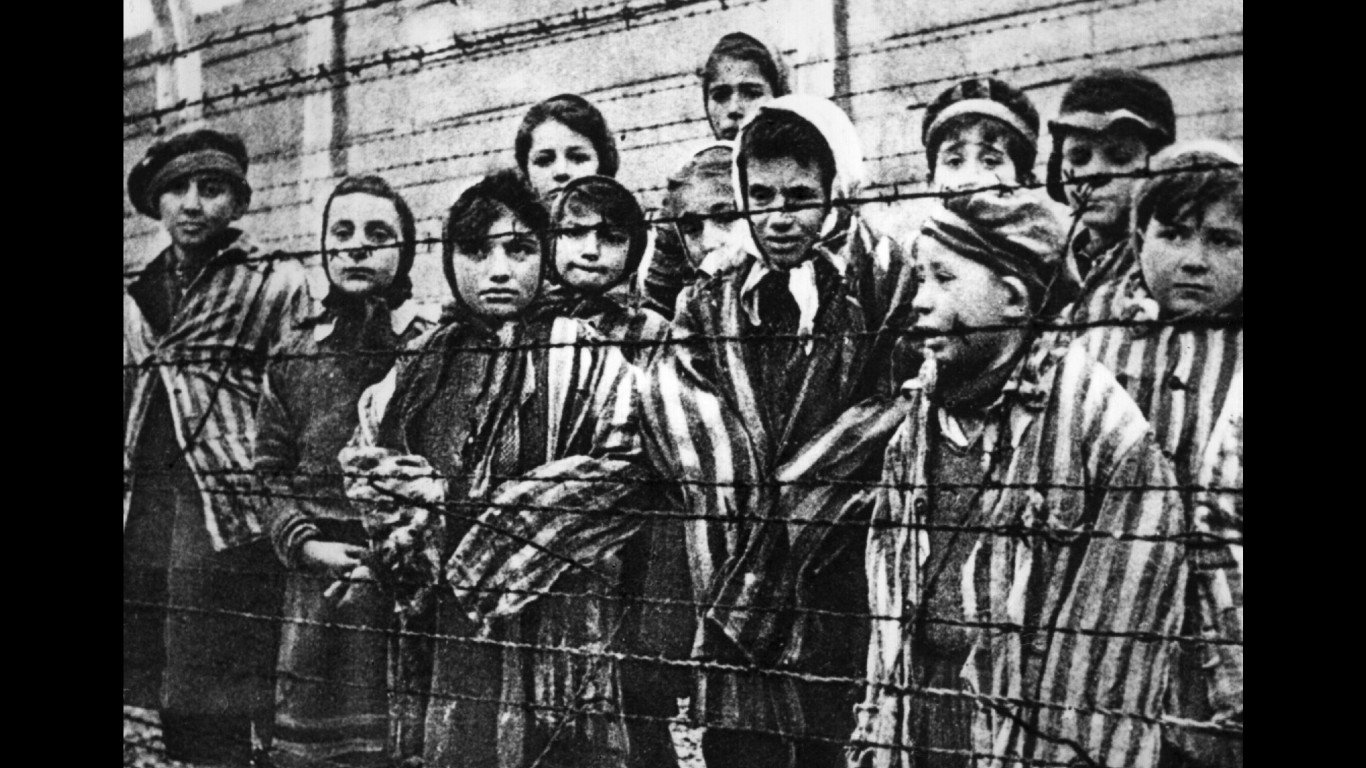
A group of children who survived the camp are photographed upon its liberation by the Red Army in 1945.
12. Enclosing fence
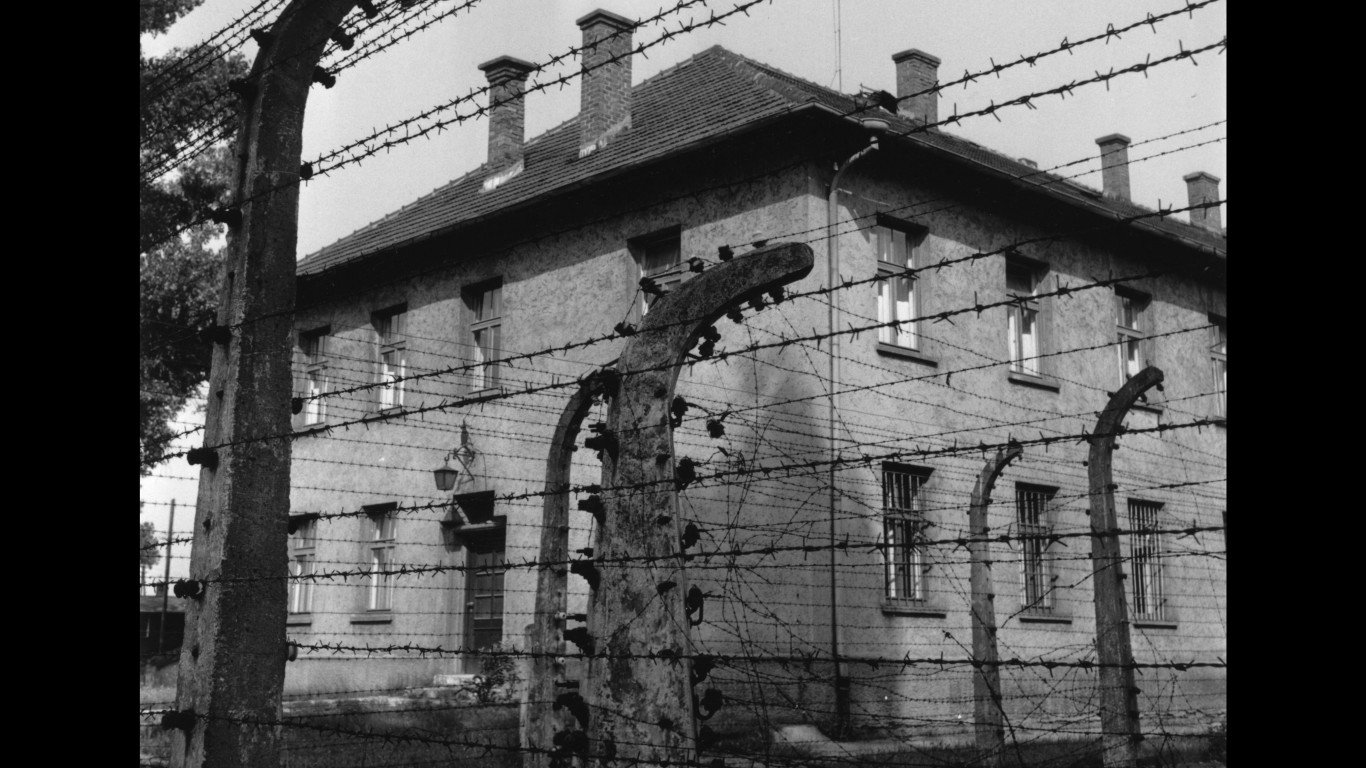
Taken a decade after the camp was liberated, this photo still shows the double-layered barbed-wire fence that kept prisoners trapped.
13. Jewish arrivals
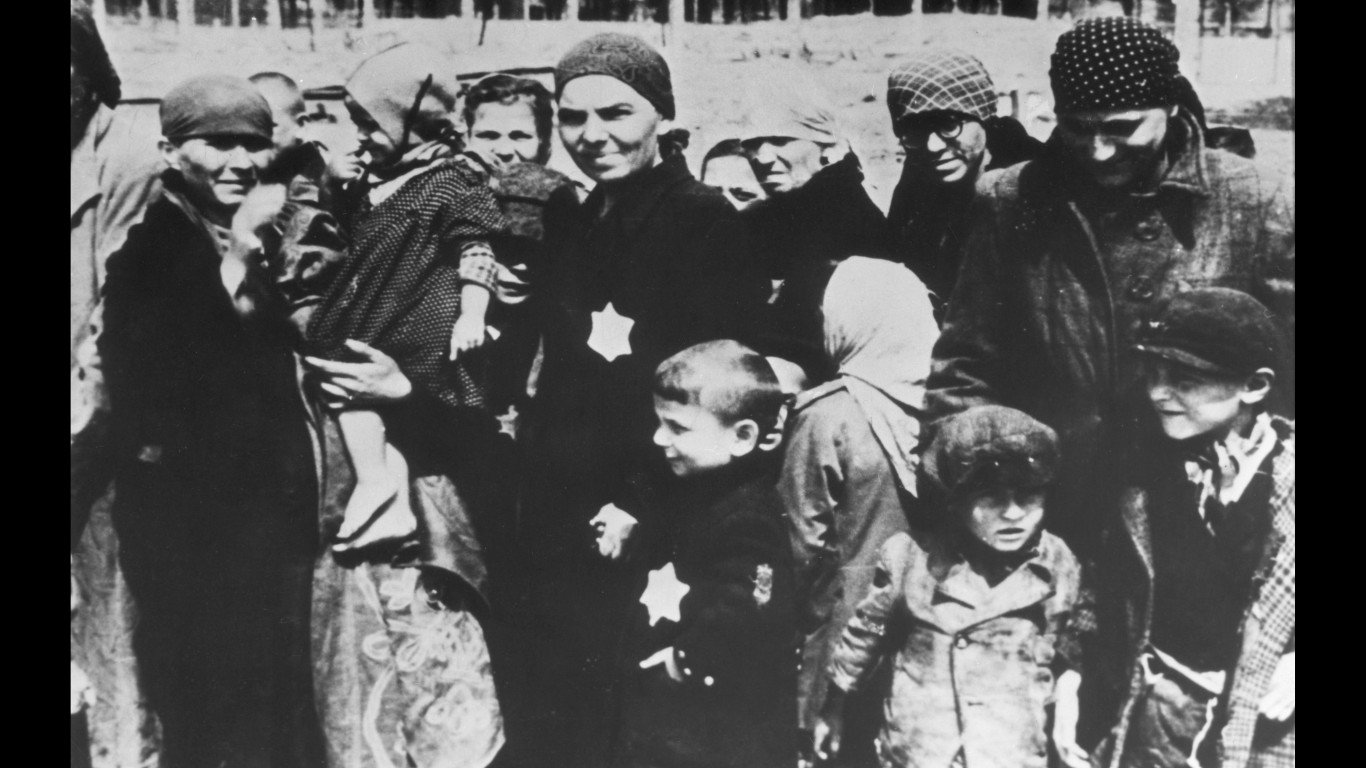
Deportees, wearing the Star of David patch that identified them as Jewish, outside Auschwitz.
14. Mark of Auschwitz
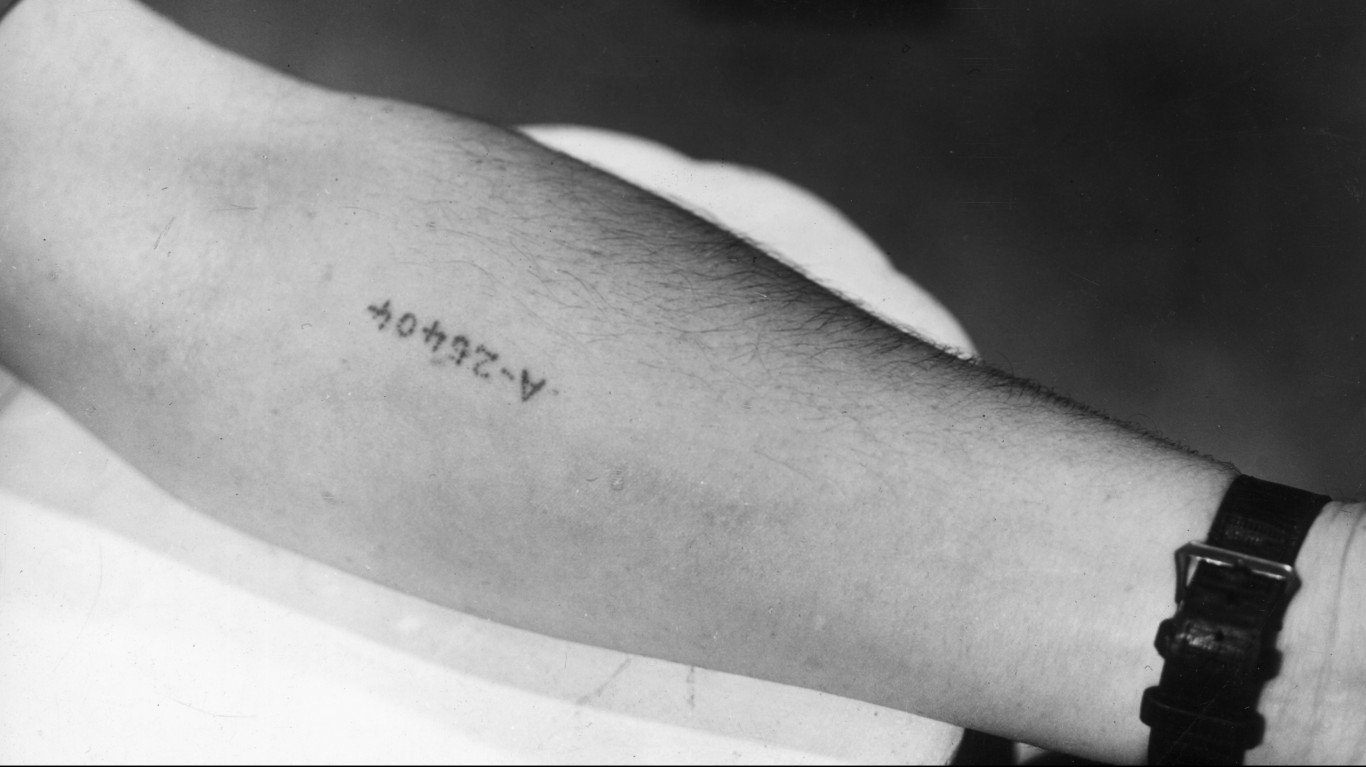
A former Auschwitz prisoner shows the serial number tattooed on his arm.
15. Auschwitz prisoners
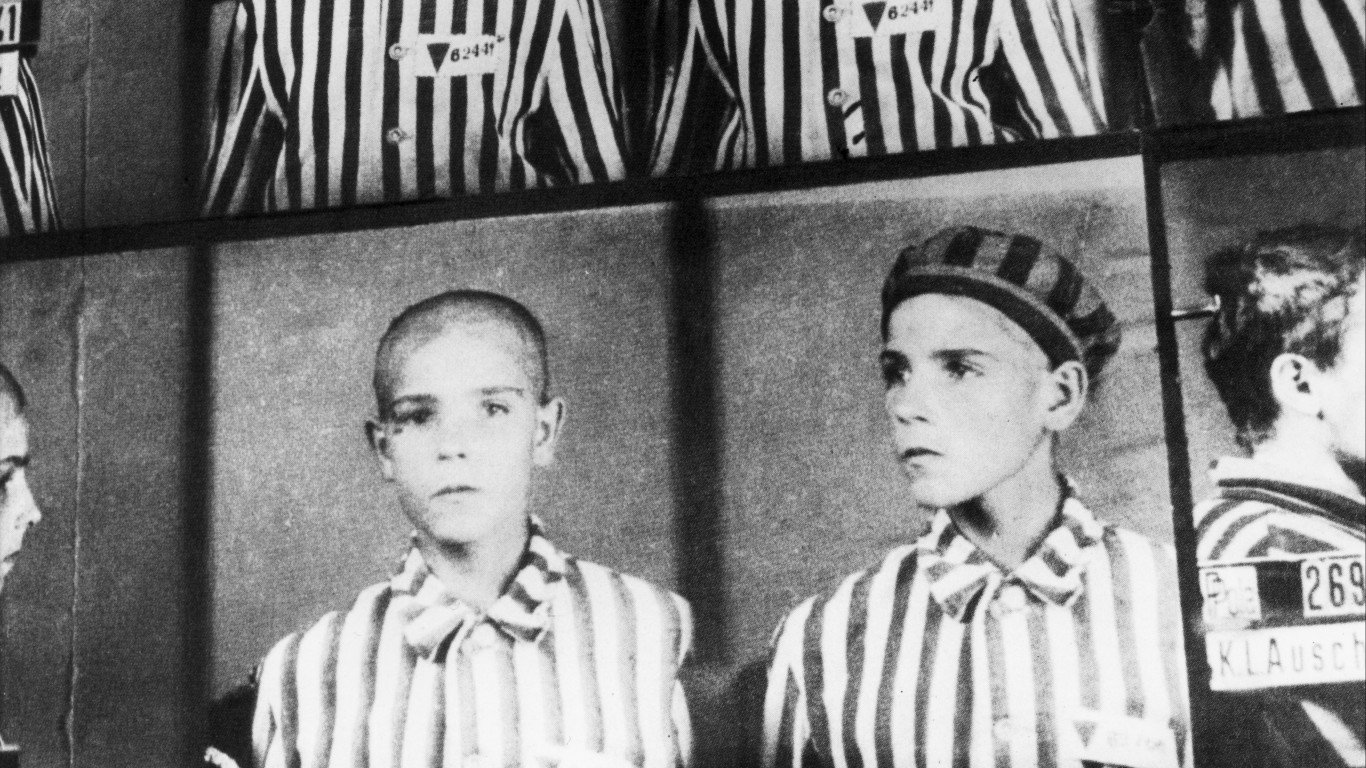
Mugshots of some boys who were prisoners at the camp.
16. The crematorium
This crematorium has been restored by the Auschwitz-Birkenau Memorial and Museum.
17. Pope John Paul II
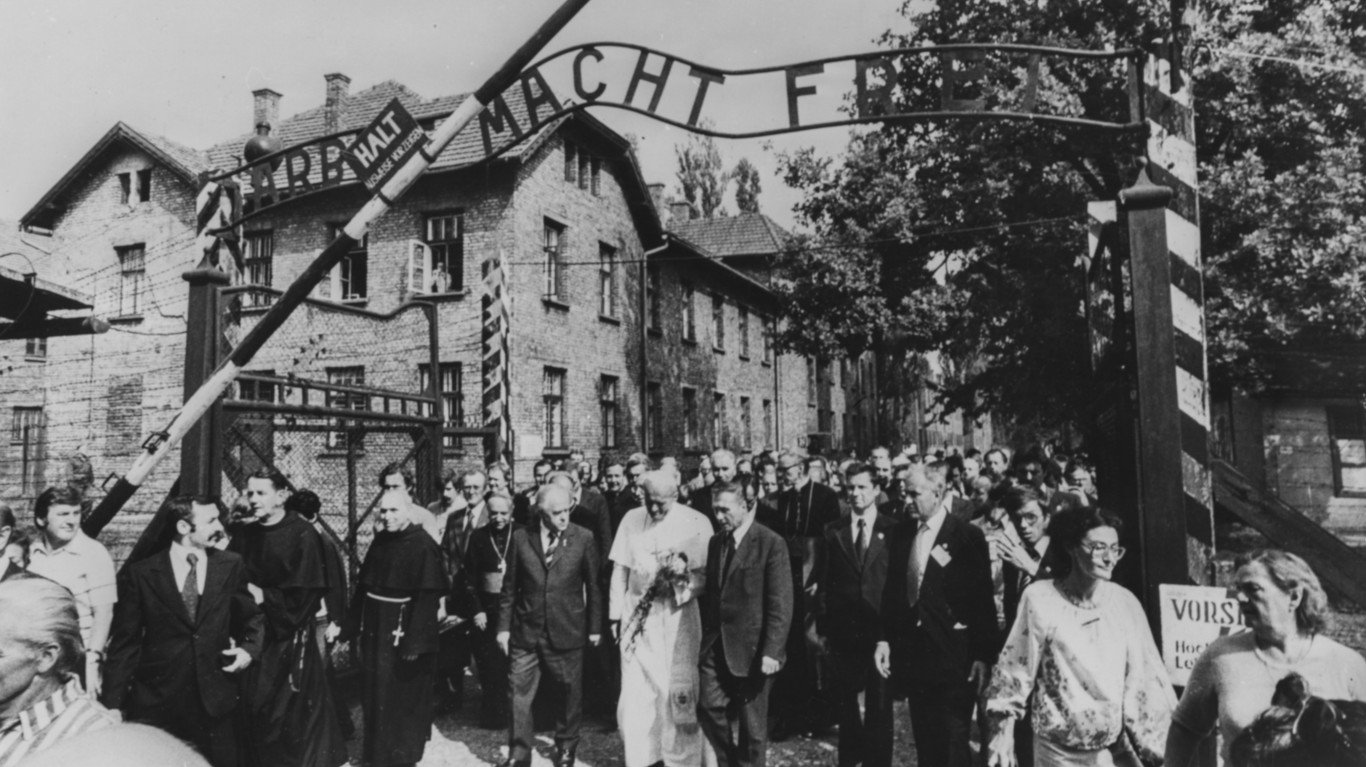
Pope John Paul II surrounded by a huge crowd as he walks through the gates of Auschwitz in 1979.
18. Auschwitz tower
A preserved guard tower near the fence of the camp.
19. Auschwitz remembered
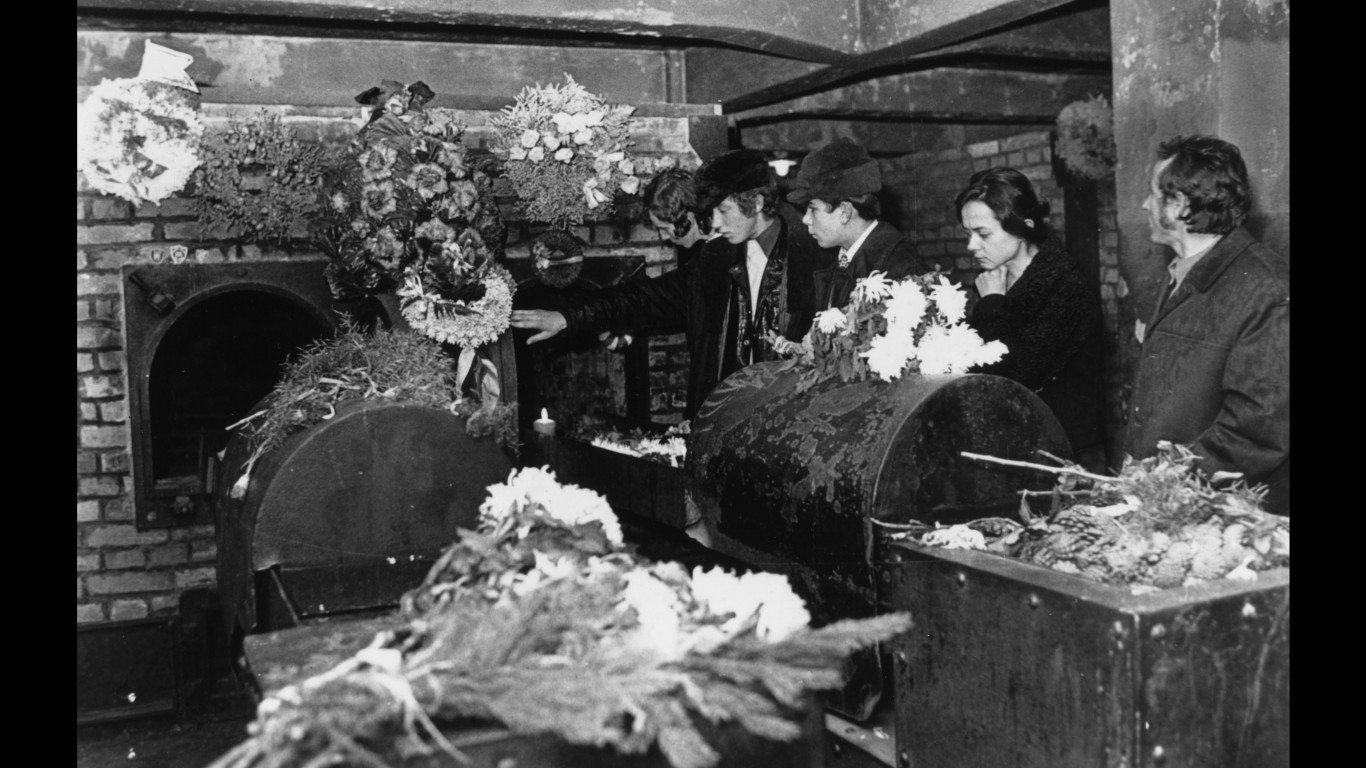
Mourners lay flowers at the site of a crematorium, circa 1950.
20. The main gates
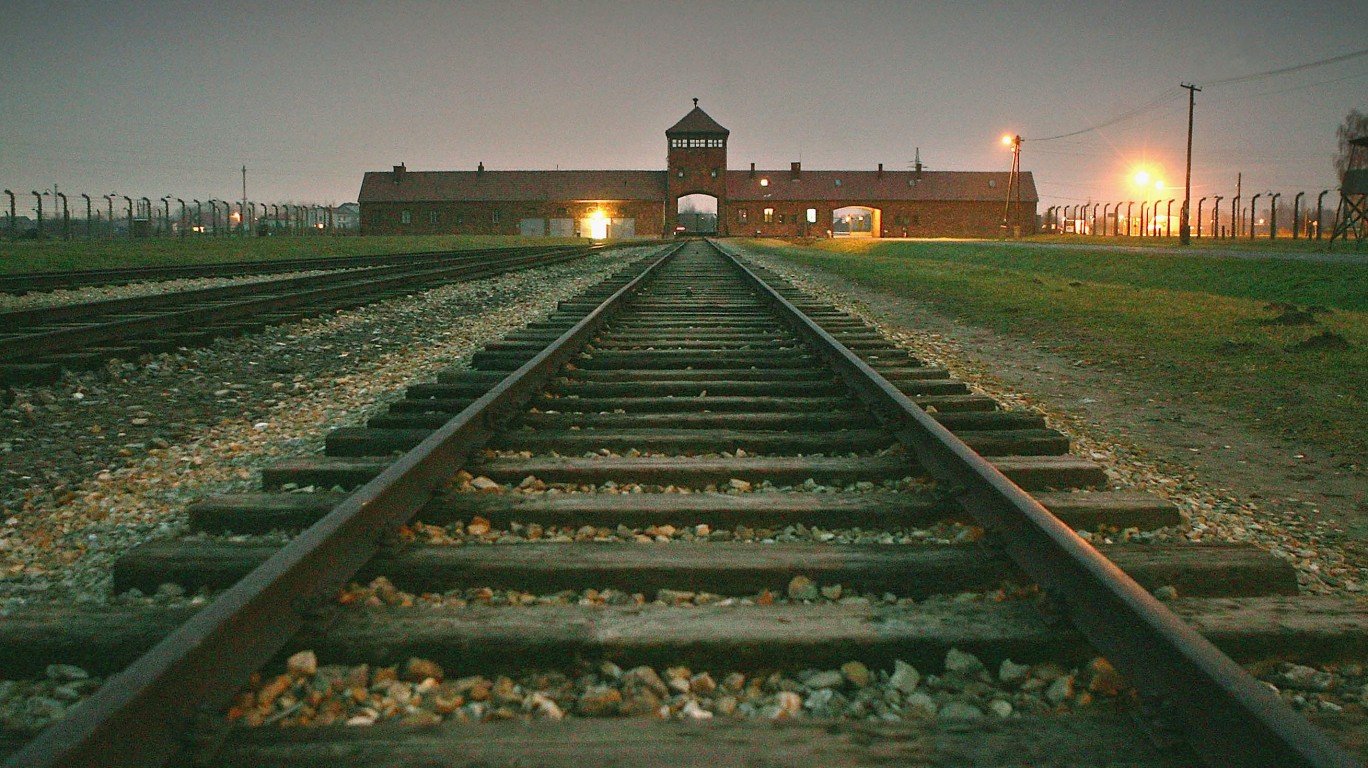
This photo, from 2004, shows the railway tracks leading to the main gates of Auschwitz.


